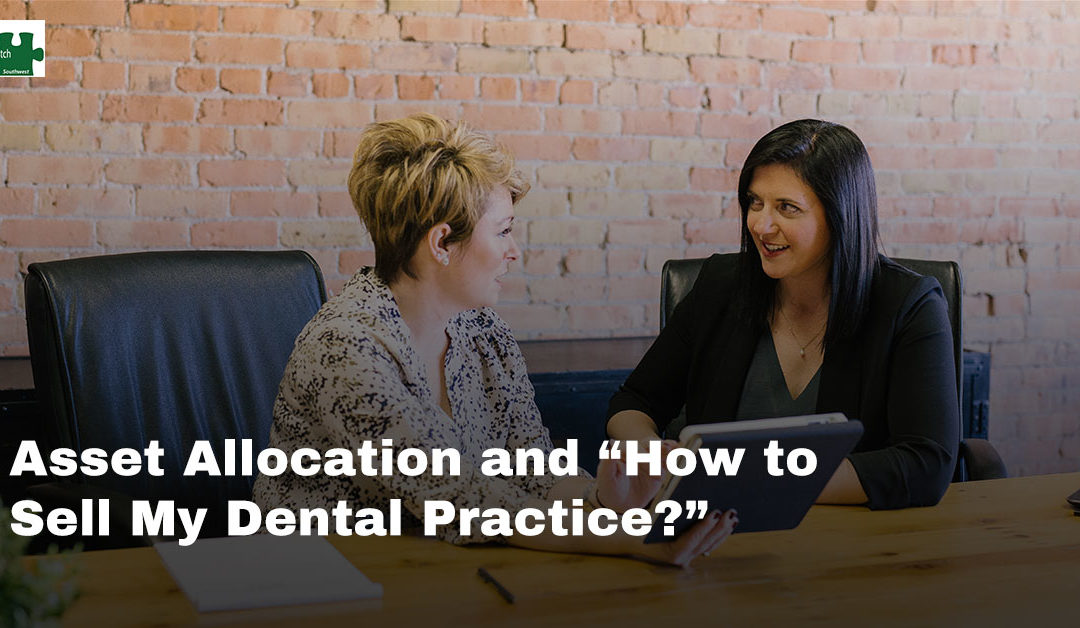If you’ve ever gotten into the weeds of the question of “how to sell my dental practice?” you’ve probably heard talk about allocation. There are different ideas about how to handle allocation and sometimes people disagree. This might make it seem complicated. But it’s not, really. There is a fairly simple rule to follow and, if you work with your dental practice transition specialist and your dental accountant, you should be able to negotiate an allocation that will work for both the seller and the buyer. But first, what is allocation?
Allocation of Assets
Simply put, the allocation of assets is the process of assigning a dollar value to each asset being transferred in the sale of a dental practice (excluding the building, if that is part of the sale). These assets include all of the tangible items of personal property included in the sale and the big intangible that usually accounts for the bulk of the value of a dental practice: the goodwill. We’ll get to why this distinction is important below.
Generally when you put a dental practice for sale, you aren’t selling the business entity (e.g., your LLC or S-Corp), you are selling what the business owns. That is, you don’t sell your shares of the corporation, you sell off all of the corporation’s assets, including your furniture, equipment, patient records, supplies, your trademark and logos, etc. All of these items are specifically identifiable and can be quantified in value. That is, your equipment is worth what you paid for it, less depreciation over time. How much could you sell your used equipment for? That would be the value its allocated. As far as the intangible of goodwill, the value there is harder to determine and is more fluid.
The Simple Rule for Allocation
The simple rule for allocation of assets is that you determine the value of the practice (for more information on this topic, see our recent post on methods of valuation for dental practices, “How Much is My Dental Practice for Sale Worth?”), negotiate an agreement between the buyer and seller on the value of each category of tangible assets (e.g., the furniture and equipment is worth $150,000, the supplies are worth $10,000, etc.), and whatever remains after that is allocated for goodwill. It’s a fairly simple arithmetic problem, once all parties are on the same page.
For instance, if you are buying a practice for $1,000,000, and the tangible assets are valued at $200,000, the goodwill is then allocated $800,000, or 80% of the purchase price. Some will say that good will should always equal a certain percentage, or fall within a certain range, such as 75-80%. That’s really the tail wagging the dog. There is no rule for how much should be allocated to goodwill. Rather, goodwill tends to fall within that range as dental practices are valuated.
Why Allocation Matters
As you are wondering “how to sell my dental practice?” you might think this sounds like a lot of trouble to go through. Why not just negotiate the overall value of the practice with the buyer and leave it at that? In a word: taxes.
For the seller, tangible assets are taxed at the ordinary rate, whereas the intangibles are taxed at the more favorable capital gains rate. This is why it’s so advantageous to have a high percentage of the purchase price allocated as intangible goodwill. The tangibles have to be allocated at a fair market value. Fair market value is essentially what the buyer and seller agree upon, but has to be within a reasonable range. The rest can then reasonably be called intangible.
If you are a buyer, you want to be able to gain back the maximum amount of the purchase price over as short of a period as you can, by expensing, depreciating, and amortizing the assets. Some of the tangible assets, certain pieces of furniture and equipment, for instance, can be depreciated over five to seven years. The goodwill, however, will take longer to depreciate, 15 years.
How to Sell My Dental Practice and Get the Most Out of It
To maximize the value of the sale of your dental practice, you need to be careful with your allocations to reduce the amount that the IRS will take of your proceeds. This is why it’s so important to have a qualified team of professionals, with knowledge and experience specific to dental practice transitions, to advise you throughout the process. At DDSmatch Southwest, as expert dental transition specialists, we recommend that in addition to a transition specialist, you have dental attorney and a dental accountant who will understand the legal and taxation pitfalls and how to avoid them. We also recommend that you use a Certified Business Valuator to evaluate every aspect of your practice to get it ready to put on the market. At DDSmatch, we partner with Blue & Co., for dental valuation consulting and dental accounting.
If you are considering a Texas dental transition or New Mexico dental transition in the next five years, contact us for a free, no-obligation Practice Transition Assessment. We will discuss the current local dental practice transition marketplace, establish best transition options for your practice, and advise on potential practice investments to increase value. Contact us today and find out how we can help you meet your dental transition goals.

